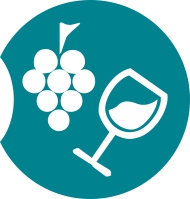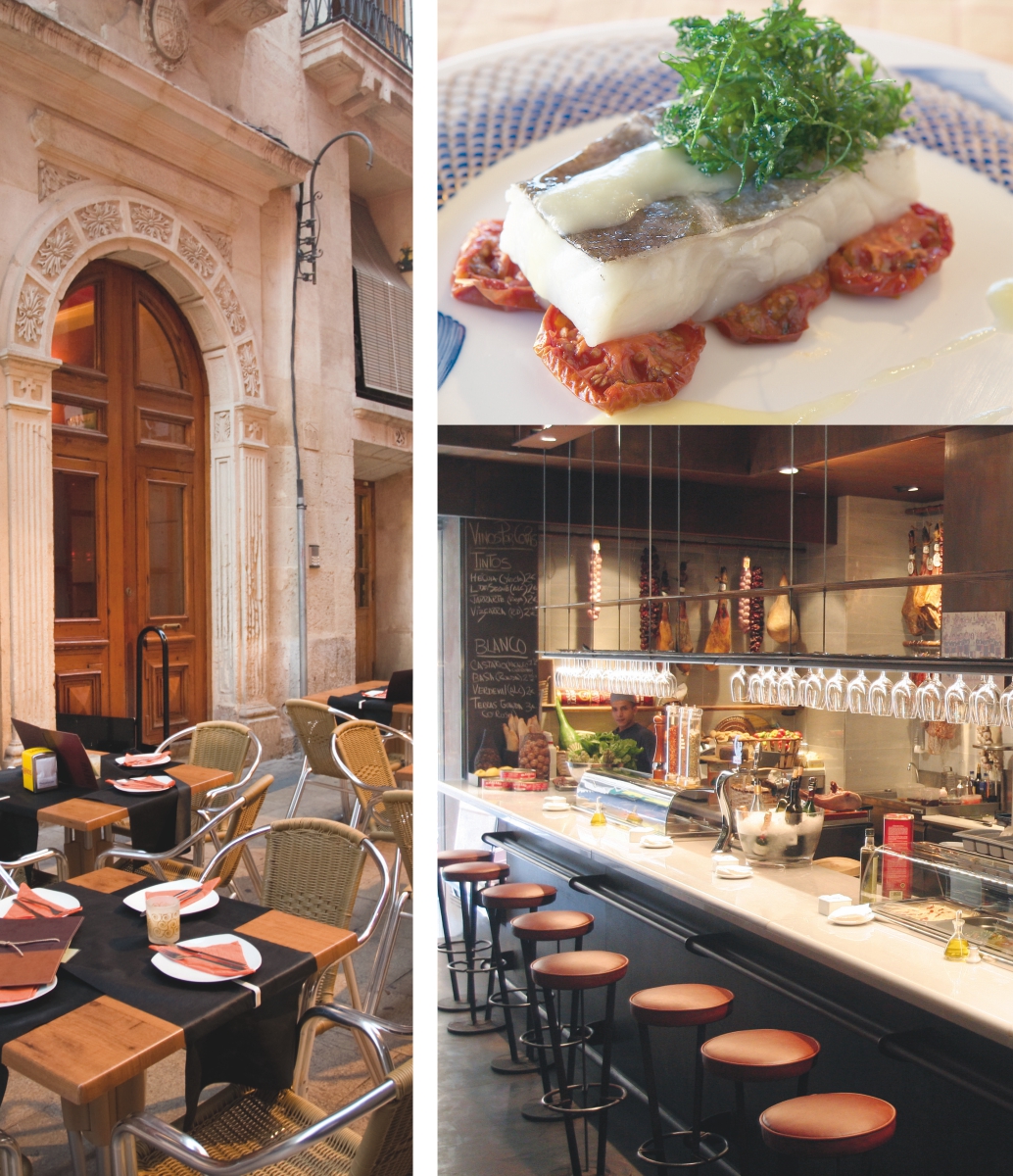300 DAYS of sun a year
THE COSTA BLANCA,
THE BEST PLACE FOR BEACH SPORTS
What sets the the Costa Blanca apart is its special climate, as its inhabitants enjoy more than 300 days of sun a year and a yearly average temperature of 18 degrees.
In May, when the competition will take place, the average temperatures of 20 – 22 degrees Celsius will be very pleasant, rising to 25 – 28 degrees at midday.
There is little or no rainfall with bright sunshine a constant companion to the days in May.
LANDSCAPES AND BEACHES BATHED BY THE MEDITERRANEAN SUN AND SEA
The Costa Blanca have many beaches which are one of their major tourist attractions. Year on year, they are recognised by the European Union with their Blue Flag Awards which confer on them well-deserved international prestige and underline their quality.
Among its coastline of over 25 km of beaches, the most outstanding are Postiguet Beach in the centre of the city, the Beach of St John in Alicante, as well as the one of the jewels of the Mediterranean, the Island of Tabarca; the Arenales del Sol Beach, and the La Marina Dune Complex and El Pinet Beach in Elche.


TABARCA ISLAND

Tabarca Island, situated some 11 nautical miles from the city of Alicante, is a prime example of Alicante’s best beaches. It is the only inhabited island in the Valencian Community, although it is in fact more than just one island. It is a small archipelago comprising the islets of La Cantera, La Galera and La Nao. The island’s centre is surrounded by walls, which have led to the island being declared a site of cultural interest. It has also been declared a Mediterranean Marine Reserve due to the excellent quality of its water and the biodiversity of its fauna and flora.

A SAFE HAVEN FOR PIRATES AND THE NATURAL HERITAGE OF COSTA BLANCA
Tabarca Island measures some 1,800m in length and 400m in width. In the past, its coasts were a refuge for Berber pirates and in the 18th century King Carlos III ordered that a town be built, where he housed various Genoese families who had been rescued from the Tunisian port of Tabarka.
There is a path around the entire island, and following it is an ideal way to visit the island, enjoy its scenery and watch the variety of marine birds that populate it.
Once on the island, its clean and crystal-clear water beaches are outstanding; both those with fine sand and rocky coves. The walled town is another must-see, where, after relaxing by the sea, you can delight in unique dishes that combine rice with products freshly-fished by the local fishermen, as well as the wellknown caldero dish.
MEDITERRANEAN ART AND CULTURE
For over 3 000 years, different civilizations and their cultures have passed through Alicante and Elche. All of them have shaped these lands and left a rich legacy which can be appreciated not only in its cultural and artistic heritage, but also in the open, innovative, warm and hospitable character of their peoples.
Some of the best examples on the Costa Blanca ...
IN ALICANTE:
Castillo de Santa Barbara (Castle of St. Barbara) Located on Mount Benacantil, 166 metres above sea level, on the coast, from where you can see the whole Bay of Alicante. Along its slopes, Iberian and Roman archaeological remains from the Bronze Age were discovered, but the present day fort dates back to the end of the 9th Century during the Moorish occupation.
MARQ: Located in the building of the old San Juan de Dios Hospital (built by Juan Vidal Ramos between 1926 and 1929), it currently houses more than 80 000 pieces which demonstrate the wealth of the history of the Costa Blanca, and the legacy left by civilizations after crossing the Mediterranean. It stands out for its modern design, its great use of audiovisual and information technology and the educational quality of its explanations.




IN ELCHE:
Palmeral de Elche (The Elche Palm Grove) If there is a feature which perfectly represents Elche, it is the palm grove – a unique landscape with more than 200 000 specimens, the largest in Europe This plantation, created for agrarian purposes, dates back to the 10th Century when the Arabs moved the city to its present location. The Palmeral de Elche was recognised by the UNESCO as a World Heritage Centre in 2000.
The Misteri d´Elx: A religious sacra-lyrical drama which recreates the Dormition, Assumption and Coronation of the Virgin Mary. The work is divided into two acts and is staged annually on the 14 and 15 August in the Basilica of St Mary.
It is the only work of its kind which has been performed uninterrupted from the 15th Century to the present day. In 2001, UNESCO declared it a Masterpiece in the Oral and Intangible Cultural Heritage of Humanity, giving Elche its second award of World Heritage status.
CULTURAL ROUTES
Participants and visitors of Costa Blanca Beach Games should not miss the opportunity for getting an in-depth knowledge of the cultural, social and gastronomical wealth of this province.
This is what the cultural routes were designed for: to capture the very essence of the Mediterranean through a set of key experiences.

CASTLE ROUTE
The Castle Route is a historical and cultural tour which invites visitors to visit some the most iconic forts in the Province of Alicante, the majority of which are in the district of Vinalopó.

WINE ROUTE
Enjoy the wine-making tradition of the Province of Alicante. Let yourself be captivated by the wealth of its wine-making by visiting historical wine cellars and tasting wines stamped with the identity of the region.
Taste both traditional menus and innovative combinations in the most prestigious restaurants and, of course, journey through the natural environment which tells the story how these lands came to produce wine.




GASTRONOMICAL ROUTE
For lovers of haut cuisine, the Costa Blanca is a little paradise.
Dacosta Restaurante: Chef Quique Dacosta, one of the finest chefs worldwide. Three stars in the prestigious Michelin Guide recognise and endorse each of the lines created by Quique Dacosta during his professional career.
His approach is based on sensory experiences, personal attention, hospitality and the creation of a comfortable atmosphere, always supported by the finest natural ingredients from Alicante’s land and sea.
Restaurante Monastrell de Alicante: Chef María José San Román. A cuisine which combines innovation with a Mediterranean touch in its recipes, recognised for the quality of its products and its use of local ingredients. One Michelin Star
Restaurant La Finca de Elche: Chef Susi Díaz. José Maria García and Susi Díaz manage this restaurant with the greatest attention to detail and a continuous spirit of innovation. A constantly evolving cuisine in which clean light flavours take precedence and enhance the purity of its fare. It is recognised with one Michelin Star.
Other restaurants with a Michelin star: BonAmb in Jávea, Casa Alfonso in Dehesa de Campoamor, Casa Pepa in Ondara and L’Escaleta in Cocentaina.
GASTRONOMY AND UNIQUE PRODUCTS
Internationally recognised for its health benefits, the Mediterranean diet is particularly evident in Alicante and Elche thanks to produce from its fertile lands and fish and shellfish from its waters.
In these regions, rice is unquestionably the principle ingredient in the majority of dishes, accompanied by fish, shellfish, meats and vegetables. The most famous among them are arroz a banda (Rice on the Side), arroz a la alicantina (Alicante Rice), arroz caldoso (Rice broth) or the popular olleta alicantina (rice and vegetable stew) made from vegetables and pulses.
Among the desserts, it is worth tasting our turrón (made from nuts) with designation of origin, horchatas (drink made from chufa nuts) and 100% homemade ice creams.
To complement these treats, it is worth trying the wines of Alicante which enjoy great recognition and prestige. The most outstanding wine of these is the Fondillon, an exclusive wine with the Alicante denomination of origin, with 100% overripe monastrell grape stock and with a minimum aging period of 10 years. It has a historical tradition which survives today, thanks to the 11 unique and exclusive wine cellars authorised to produce it.

One of the most traditional dishes in Alicante is undoubtedly the coca amb tonyina, which is a succulent tuna fish pie, as well as other kinds of pastries such as boba (sweet) and molletes (savoury). The wealth of Alicante’s gastronomy extends to cover a wide variety of montaditos (canapés) and tapas (appetisers) using ingredients such as meats, vegetables and salted fish.
The Costa Blanca have a wide range of restaurants of all categories from the most elegant and sophisticated to those with a more relaxed atmosphere. In each of them, you can enjoy the delights of our gastronomy.
SHOPPING: SOMETHING FOR EVERYTHING
Alicante have historically been important commercial centres. For centuries many civilizations have used their streets to buy and sell goods, a tradition which has survived to this day with an infinite number of shops where the visitor will be able to find everything from the most modern and prestigious brands to the typical products of the region.
Luxury boutiques, many commercial centres and small and medium-sized traditional shops offer customers products ranging from turrón (a sweet made from nuts), chocolates, dates, liqueurs, wines, preserves, toys, shoes, fur coats, rugs, handicraft, and ceramics as well as products from internationally renowned brand names in clothing, jewellery, sports products and everything that a visitor might need.
In Alicante, there are very interesting shopping areas in the city centre: on one side, you find the pedestrianised streets and surroundings of the Teatro Principal (Main Theatre); on the other, the area around the Central Market (Mercado Central) and Alfonso el Sabio Avenue, and of course, do not forget Maisonnave Avenue and its area of influence, Alicante’s commercial artery par excellence.
The famous Explanada de España offers a wide assortment of handicraft stalls, handmade jewellery and souvenirs which allow visitors to appreciate the work of painters and cartoonists in the area known as the ‘Hippies’.


POPULAR FESTIVALS
Fire, powder, music, decoration, exhibition and spectacle are consubstantial aspects of festivals in our region, which for centuries have been organised to be held in the street, together with local people and visitors, since the sense of hospitality and the open invitation to participate in the festivities make them social events celebrated throughout all the towns and cities in the region.
Among the innumerable number of festivals and feasts, there are some that have been declared festivals of International Tourist Interest.

INTERNATIONAL TOURIST INTEREST
The greatest festival is the Hogueras de San Juan (Bonfires of St John the Baptist) with the most events taking place between 19 and 24 June.
In every corner of the city, decorations and artistic monuments are ‘planted’, made up of different materials on a wooden frame, which make poetic, ironic and mocking allusions to present-day life or to aspects specific to Alicante and the Mediterranean.

WORLD HERITAGE
In Elche, the most important is El Misteri, or Festa d’ Elx, the most genuine sign of identification of the city, is a sung dramatisation of mediaeval origin which relates the story of the Dormition, Assumption and Coronation of the Virgin Mary. The work is divided into two acts: the Vespra (Eve), which is performed on the 14 August and Dia de la Mare de Déu, performed on the 15 August. The venue for this play is the baroque Basilica of St Mary, which is considered very appropriate for this event.
LEISURE & ENTERTAINMENT
Its pleasant climate, sun-soaked days, the open and hospitable character of its inhabitants all make the Costa Brava an ideal place to enjoy your free time in all its different forms.
A dip in the warm waters of its beaches, unforgettable walks, outdoor sports, an ice-cream on its iconic terraces, dinner with friends, dancing and laughing to your heart’s content… all this and much more is what a visitor can find in these lands.
The Costa Blanca is ideal for water sports. The Mediterranean sea is ‘open’ all year round for water sports.
Walking along the streets of these cities is like being bathed with vitality, enjoying the intricate historical centres with their classic buildings, from the ultra modern to the traditional, shops, bars and restaurants, urban beaches, public squares and gardens – all of this invites you to take in the Mediterranean atmosphere and give you a new lease of life. The Explanada de España (Esplanade of Spain), the Santa Cruz Barrio, the Postiguet Beach, Alicante port are some of the finest places the area has to offer the visitor, and many more just waiting to be discovered.
These are cities that do not sleep. The night starts with the excitement of people looking for the best tapas bars to build up the energy for a long night of dancing and laughter in the best party clubs.


